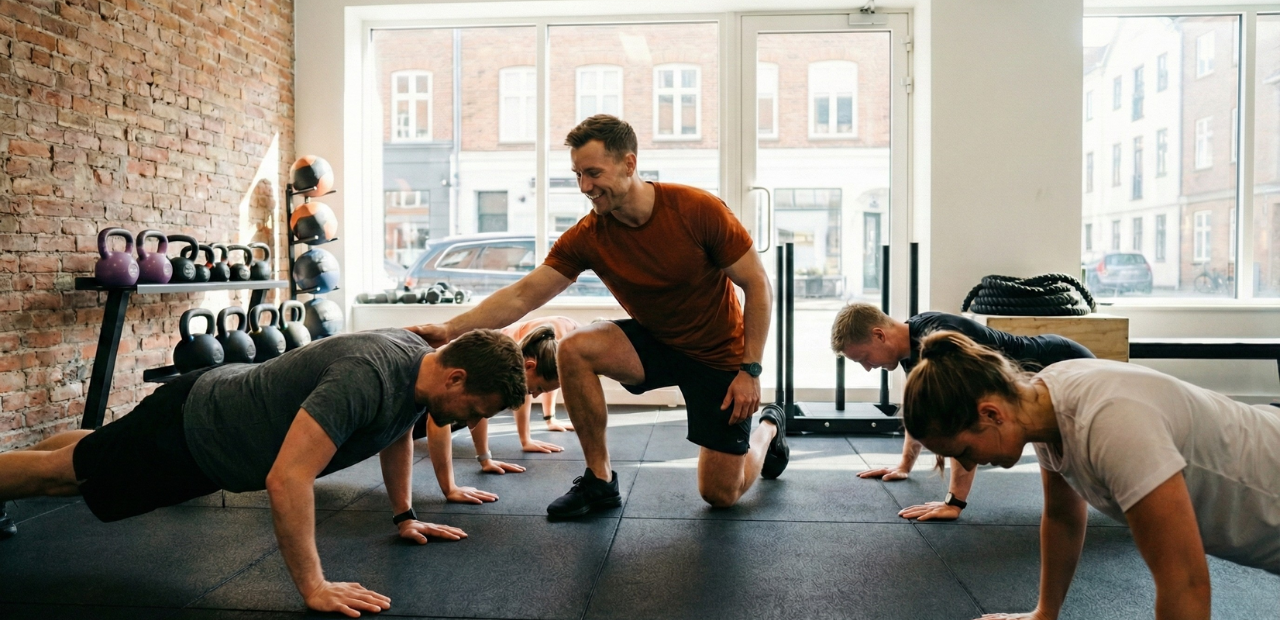Do you want to make a real difference in people’s lives while having the job satisfaction that comes with helping seniors stay active and healthy?
Personal training for seniors is the perfect career to help them keep fit, prevent chronic health conditions, and age gracefully.
If you have experience or skills in working with older adults but don’t quite know where to start on your path as an age-defying fitness professional, this article will provide insight into what it takes!
Understanding the Aging Process And its Effects on Fitness
Aging is a natural part of life, and it brings about various physiological, cognitive, and emotional changes that can impact fitness. Understanding these changes is crucial to design effective and safe exercise programs for seniors.
Physiological Changes
Muscle strength and mass: Time inevitably leads to a decrease in muscle strength and mass. Sarcopenia, the age-related dip in muscle mass, kicks off as early as our 30s and picks up speed after 50.
This drop in muscle mass can impact a senior’s functional abilities, turning everyday tasks into challenges. Exercise programs concentrating on strength training can help fight these changes and preserve muscle mass.
Bone density: Older people face a higher risk of developing osteoporosis due to diminishing bone density. Age-related bone loss starts around 40, with women experiencing a steeper decline compared to men.
As a personal trainer, you can help seniors lower their fracture risk by incorporating weight-bearing exercises and strength training into their fitness routines, promoting bone health.
Flexibility: Aging can lead to reduced flexibility as tendons and ligaments lose their elasticity over time.
This decrease in flexibility can harm balance and coordination, making seniors more susceptible to falls and injuries.
Flexibility exercises, like stretching and yoga, should be a core component of a senior’s fitness program to maintain and boost mobility.
Balance and coordination: Older adults may see a decline in balance and coordination due to shifts in the nervous system, muscle strength, and joint flexibility.
Balance training exercises, like tai chi or single-leg stance activities, can help enhance stability and prevent falls.
Cardiovascular health: As we age, the heart and blood vessels become less efficient, raising the risk of cardiovascular diseases.
Regular aerobic exercises such as brisk walking, swimming, or cycling can help seniors maintain a healthy heart and circulatory system.
Cognitive Changes
Memory: Time has a way of dulling our memory. Age-related memory decline starts as early as our 20s, and by 65, nearly half the population experiences some memory impairment.
Studies reveal that regular exercise can improve memory and cognitive function in older adults, making it a vital aspect of senior fitness.
Attention and focus: Aging can make maintaining attention and focus more challenging. Older adults may struggle to ignore distractions and concentrate on tasks.
A tailored exercise program can help seniors stay engaged and mentally sharp by including activities that require focus, such as balance exercises or mind-body practices like yoga.
Learning new skills: Many seniors may feel nervous about learning new exercises, but with patience and encouragement from a top-notch personal trainer, they can develop new skills and reach their fitness goals.
A supportive environment and well-structured exercise programs can facilitate skill acquisition and build confidence in older adults.
Emotional and Social aspects
Motivation: It can be challenging for seniors to find the motivation to exercise regularly. Personal trainers play a crucial role in providing the necessary support, accountability, and encouragement to help their senior clients stay on track.
By understanding each client’s unique needs and preferences, personal trainers can create engaging and enjoyable exercise programs that keep seniors motivated.
Social support: Loneliness and social isolation can have a significant impact on older adults’ mental and emotional well-being.
Group fitness classes or personal training sessions can offer valuable opportunities for social interaction, helping seniors build connections and feel a sense of belonging.
Fear of injury: Numerous seniors may feel reluctant to embark on an exercise program, fearing injury or aggravating existing health concerns.
As a personal trainer, it’s crucial to allay these fears by fostering a safe, supportive atmosphere, teaching proper exercise techniques, and suggesting suitable modifications to minimize injury risks.
Benefits of Exercise for Seniors
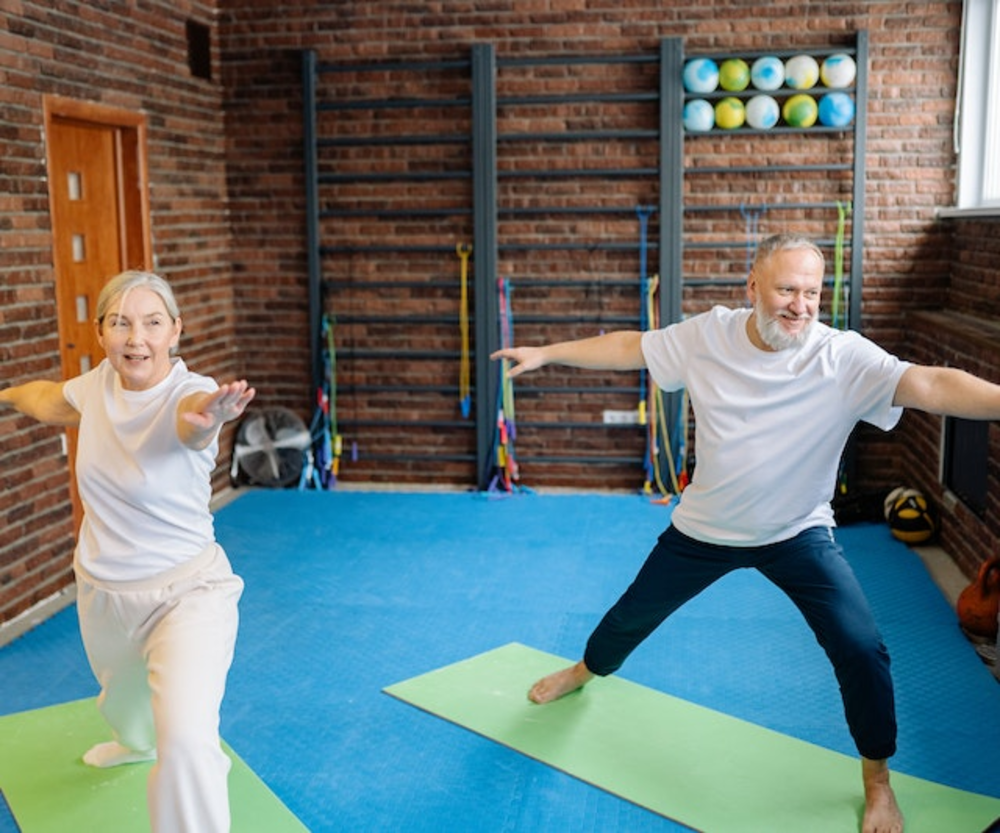
Physical activity is indispensable for seniors, as it offers a wealth of physical, mental, and social perks. Below are some key reasons for staying active during one’s golden years:
Physical Health Benefits
Improved cardiovascular health: Routine aerobic exercise can aid older adults in maintaining a healthy heart, lowering blood pressure, and diminishing the risks of heart disease, stroke, and other cardiovascular troubles.
Stronger muscles and bones: Strength training exercises can assist seniors in building and preserving muscle mass, boosting bone density, and cutting down the risk of falls and fractures.
Enhanced flexibility and balance: Weaving stretching and balance exercises into a senior’s fitness regimen can enhance mobility, stability, and overall life quality.
Chronic disease management: Exercise can aid in handling various chronic health issues like diabetes, arthritis, and osteoporosis, by alleviating symptoms and reducing medication dependence.
Mental Health Benefits
Improved cognitive function: Regular physical activity can amplify brain health and cognitive function in older adults, helping them retain memory, attention, and problem-solving abilities.
Reduced risk of dementia: Research indicates that exercise may reduce the likelihood of developing dementia, including Alzheimer’s disease, by promoting brain health and safeguarding against cognitive decline.
Stress reduction: Engaging in regular exercise can help seniors tackle stress and anxiety, contributing to enhanced mental health and overall well-being.
Improved mood and self-esteem: Physical activity can elevate mood and self-esteem by triggering the release of feel-good hormones like endorphins, serotonin, and dopamine.
Social benefits
Increased social interaction: Participating in group fitness classes or working with a personal trainer provides seniors with opportunities for social interaction and connection, reducing feelings of loneliness and isolation.
Sense of belonging and community: Being part of a fitness community can give seniors a sense of belonging, which can be vital for their emotional well-being and help them stay motivated to maintain their exercise routine.
Developing An Effective Fitness Program for Seniors
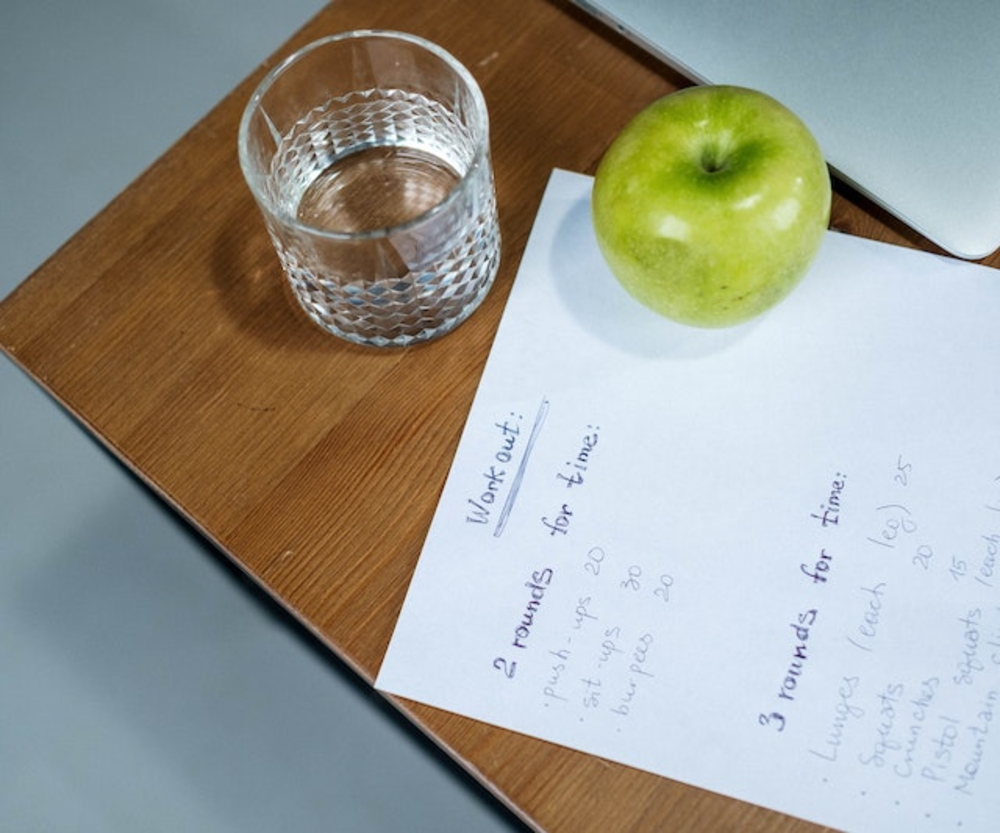
As a personal trainer for seniors, it’s essential to design a personalized exercise program that addresses each individual’s unique needs and goals.
Assessing Individual Needs and Goals
Medical history and current health: Prior to diving into any fitness regimen, it’s vital to grasp each senior client’s medical past and present health status. This intel allows you to pinpoint potential health risks and craft a safe, effective exercise plan.
Fitness level: Evaluating a client’s present fitness level via fitness assessments like the Senior Fitness Test or Functional Fitness Test helps you create a program tailored to their capabilities and requirements. These evaluations offer priceless insight into a senior’s strength, flexibility, balance, and aerobic capacity.
Personal preferences and interests: Familiarize yourself with senior clients’ preferences to devise an enjoyable, captivating fitness program. Motivate them to try out various activities and exercises to discover their favorites and what they’re most likely to pursue.
Designing a Balanced Workout Plan
Aerobic exercises: Blend cardiovascular pursuits like walking, swimming, or cycling into the exercise plan to aid seniors in sustaining a healthy heart and lungs.
Strive for a minimum of 150 minutes of moderate-intensity aerobic activity weekly, as endorsed by the American Heart Association.
Strength training: Integrate strength training workouts, such as resistance bands, free weights, or bodyweight exercises, to help seniors develop and preserve muscle mass and bone density. Aim for a minimum of two strength training sessions weekly, targeting all primary muscle groups.
Flexibility exercises: Routine stretching and flexibility exercises assist seniors in retaining and enhancing their range of motion, balance, and coordination.
Weave stretching exercises for all major muscle groups into the fitness plan, concentrating on areas prone to tightness with age, like hips, lower back, and shoulders.
Balance and coordination exercises: Balance conditioning is crucial for seniors to avert falls and uphold independence. Include exercises like tai chi, single-leg stands, or heel-to-toe walking to boost stability and coordination.
Progression and Adaptation
Gradual increase in intensity: As your senior clients become more comfortable with their exercise program and improve their fitness level, gradually increase the intensity and duration of their workouts. This progression will help them continue to see results and avoid plateaus.
Incorporating new exercises and activities: Keep your clients engaged and motivated by introducing new exercises and fitness challenges into their fitness routine. This variety can help prevent boredom and stimulate different muscle groups, promoting overall physical health.
Adjusting for injuries or health issues: Be prepared to modify the exercise program to accommodate any injuries, health issues, or limitations your senior clients may experience.
By being flexible and adaptive, you can ensure they continue to benefit from physical activity while staying safe and avoiding further complications.
Tailoring Coaching Techniques For Seniors
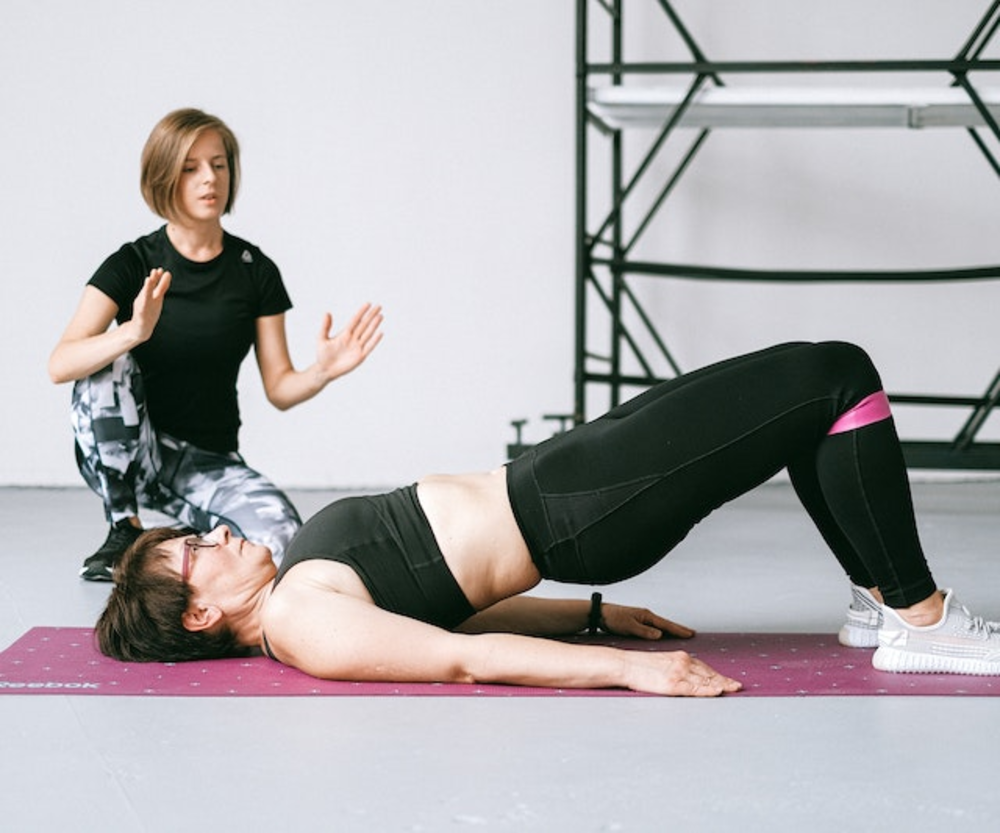
Effective communication and coaching methods are the secret sauce for helping seniors reach their fitness goals and savor their workout experiences.
Communication and Rapport
Active listening: Tune in to your client’s concerns, ambitions, and adventures by actively lending an ear and asking open-ended questions. This way, you’ll foster trust and rapport, making them more inclined to spill the beans on their thoughts and emotions.
Empathy and understanding: Show some heart by empathizing with and acknowledging the hurdles your clients might face. This supportive touch will help them feel more at ease and self-assured on their fitness quest.
Clear and concise instructions: Give crystal-clear exercise directions, opting for simple language and demos to guarantee seniors can nail the exercises safely and accurately.
Motivation and Encouragement
Setting realistic goals: Help your senior clients set attainable, realistic fitness goals that are tailored to their abilities and needs. These goals can provide motivation and a sense of accomplishment when achieved.
Providing positive feedback: Offer constructive feedback and praise to reinforce your clients’ efforts and celebrate their progress. This positive reinforcement can help boost their confidence and motivation to continue working towards their fitness goals.
Celebrating milestones and achievements: Recognize and celebrate your clients’ milestones and achievements, whether it’s completing their first 5K walk, lifting heavier weights, or improving their balance.
These celebrations can provide a sense of accomplishment and motivation to continue pursuing their fitness goals.
Teaching Strategies
Breaking down complex movements: Break down complex exercises into smaller, simpler movements to help seniors understand and master the techniques. This approach can make learning new exercises less intimidating and more manageable.
Demonstrations and hands-on guidance: Use visual demonstrations and hands-on guidance to help seniors learn proper exercise techniques and avoid potential injuries. This support can help them feel more confident in their abilities and more likely to succeed in their fitness journey.
Adjusting pace and complexity: Be mindful of each client’s learning pace and adapt the complexity of exercises accordingly.
Some seniors may require more time and repetition to master new movements, while others may thrive with more challenging exercises. By catering to each individual’s needs, you can provide an enjoyable and effective fitness experience.
Ensuring Safety and Injury Prevention

As a personal trainer for seniors, prioritizing safety and injury prevention is vital to provide a positive exercise experience.
Proper warm-up and cool-down: Ensure your clients engage in proper warm-up and cool-down routines to prepare their muscles and joints for exercise and reduce the risk of injury.
Warm-ups should include dynamic stretches and low-intensity aerobic activities, while cool-downs should involve static stretching and relaxation exercises.
Appropriate exercise modifications: Offer appropriate exercise modifications and progressions based on your client’s abilities and limitations. This approach can help them perform exercises safely and effectively while reducing the risk of injury or strain.
Monitoring signs of discomfort or pain: Regularly check in with your clients during their exercise sessions to monitor any signs of discomfort, pain, or fatigue. If they report any issues, be prepared to adjust the exercise program accordingly to ensure their safety and well-being.
Collaboration with healthcare professionals: Maintain open communication and collaboration with your clients’ healthcare professionals, such as doctors or physical therapists, to ensure their exercise program is safe and effective based on their medical history and current health status.
Building a Successful Personal Training Business for Seniors
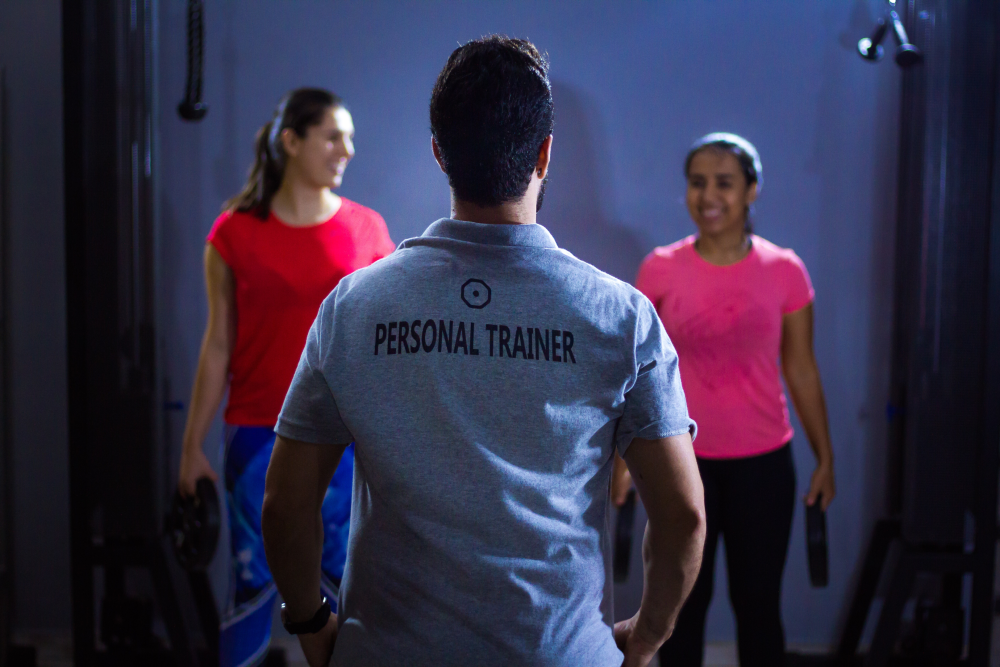
A successful personal training business for seniors requires not only expertise in fitness and coaching but also a keen understanding of the unique needs and preferences of older adults.
Marketing and Promotion
Targeted advertising: Develop marketing materials and advertising campaigns specifically tailored to the senior demographic. Highlight the benefits of exercise for seniors and showcase your expertise in working with this age group.
Networking and partnerships: Establish relationships with local healthcare providers, senior centers, and retirement communities to promote your services and reach potential clients.
This kind of fitness networking can help you connect with seniors who may be interested in your personal training services.
Social media and online presence: Create a strong online presence through social media platforms, a professional website, and online reviews. Share informative content and success stories to demonstrate your expertise and connect with potential clients.
Offering Specialized Services
In-home personal training: Many seniors may feel more comfortable exercising in the privacy and convenience of their own homes.
Offer an in-home personal training session, bringing the necessary equipment and expertise to your client’s homes.
Getting personal training clients online can help you stand out from the competition and attract clients who may be unable or unwilling to attend a gym or fitness center.
Group fitness classes: A group exercise session can provide seniors with a sense of community, social interaction, and motivation.
Offer a variety of age-appropriate group classes tailored to the needs and interests of your senior clients, such as gentle yoga, chair aerobics, or low-impact dance classes.
In addition to providing physical health benefits, these classes can foster camaraderie and social support among participants.
Exercise programs for specific health conditions: Develop specialized exercise programs tailored to seniors with specific health conditions, such as arthritis, diabetes, or Parkinson’s disease.
These targeted programs can help your clients manage their symptoms, improve their quality of life, and reduce their risk of complications.
Collaborate with healthcare professionals to ensure your programs are safe and effective for each client’s unique needs.
Ongoing Education and Professional Development
Senior-specific certifications: Pursue certifications and training programs specifically focused on senior fitness, such as the Senior Fitness Specialist certification or the SilverSneakers Instructor certification.
These credentials can help you enhance your expertise and credibility as a personal trainer for seniors.
Continuing education: Stay up-to-date with the latest research and best practices in senior fitness by participating in workshops, conferences, and online courses. This commitment to ongoing education can help you provide the highest quality service to your clients.
Building a network of professionals: Connect with other fitness professionals who specialize in senior fitness to share ideas, resources, and support. This network can help you stay informed about new developments in the field and enhance your professional growth.
Conclusion
Working as a personal trainer for seniors can be an incredibly rewarding and fulfilling career path. By understanding the unique needs and preferences of older adults, you can design effective and safe exercise programs that improve their physical, mental, and social well-being.
Through targeted marketing, creating a senior-friendly environment, and ongoing professional development, you can build a successful personal training business that helps seniors lead healthier, happier lives. So, go forth and make a positive impact in the lives of seniors through the power of fitness!




